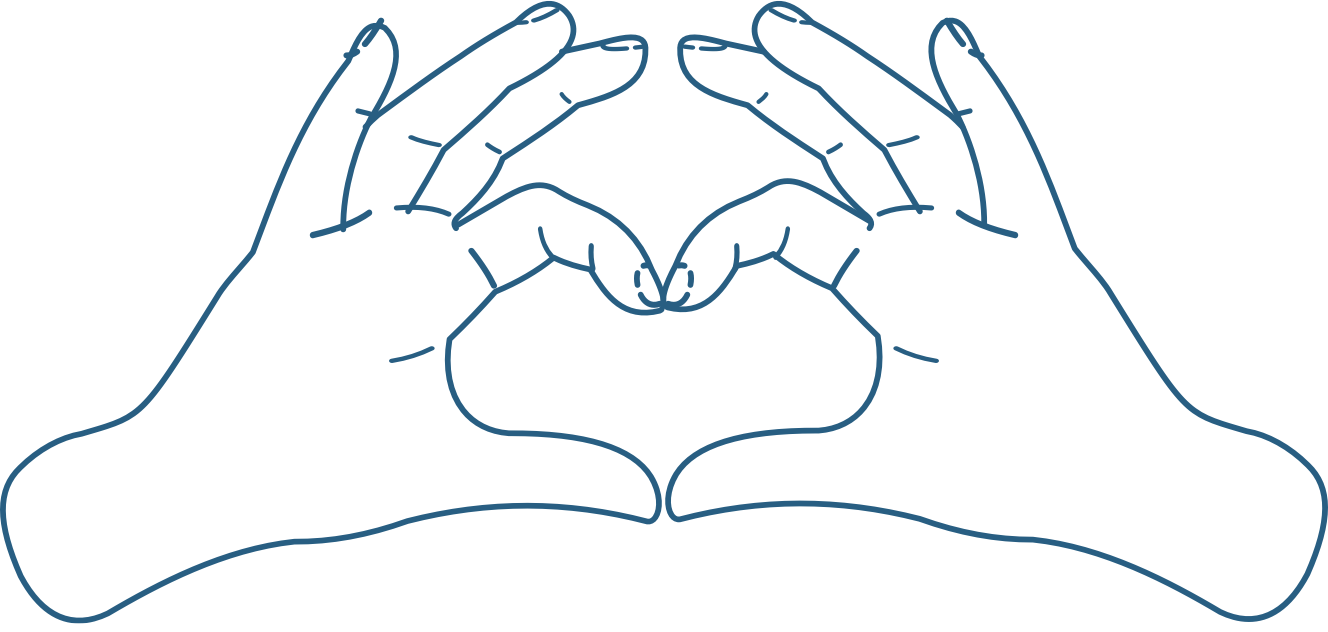The Legion Steps to Calories Calculator estimates how many calories you burn based on your height, weight, number of steps, average pace, and the type of walking you did.
How the Legion Steps to Calories Calculator Works
To convert your steps to calories, the Legion Steps to Calories Calculator performs the following calculations:
Step 1: Estimate your stride length and how far you walked.
The average stride length is approximately 41.4% of a person’s height, which you can estimate using the equation:
- Stride length = height (in meters) × 0.414
Using this, the calculator determines how far you walked:
- Distance = stride length × steps
Step 2: Calculate walking time.
To calculate the distance you walked, the Steps to Calories Calculator uses the following formula:
- Time = distance ÷ speed (in meters per second)
Step 3: Calculate calories burned.
Finally, the calculator estimates the number of calories you burned while walking:
- Calories = time × METs × 3.5 × weight in kg/(200 × 60)
What Are METs?
You may have noticed that the Legion Steps to Calories Calculator factors in “METs”, and you might be wondering what they are.
METs (Metabolic Equivalent of Task) measure how much energy an activity burns compared to resting. A MET value of 1 represents the calories burned while sitting still, while higher values indicate greater energy expenditure.
The Legion Steps to Calories Calculator MET values are based on the type of walking you did and your speed to provide an accurate estimate of how many calories you burned.
Here are the MET values the calculator uses for outdoor walking:
- Very slow (2.0 to 2.4 mph/3.2 to 3.9 km/h) = 2.8 METs
- Slow (2.5 mph/4 km/h) = 3.0 METs
- Moderate (2.8 to 3.4 mph/4.5 to 5.5 km/h) = 3.8 METs
- Brisk (3.5 to 3.9 mph/5.6 to 6.3 km/h) = 4.8 METs
- Very brisk (4.0 to 4.4 mph/6.4 to 7.1 km/h) = 5.5 METs
- Fast (4.5 to 4.9 mph/7.2 to 7.9 km/h) = 7.0 METs
- Very fast (5.0 to 5.5 mph/8.8 to 8.9 km/h) = 8.5 METs
Here are the MET values for walking on a treadmill:
- Very slow (2.0 to 2.4 mph/3.2 to 3.9 km/h) = 3.0 METs
- Slow (2.5 to 2.9 mph/4.0 to 4.7 km/h) = 3.5 METs
- Moderate 3.0 to 3.4 mph/4.8 to 5.5 km/h) =3.8 METs
- Brisk (3.5 to 3.9 mph/5.6 to 6.3 km/h) = 4.8 METs
- Very brisk (4.0 to 4.4 mph/6.4 to 7.1 km/h) = 5.8 METs
- Fast (4.5 to 4.9 mph/7.2 to 7.9 km/h) = 6.8 METs
- Very fast (5.0 to 5.5 mph/8.0 to 8.9 km/h) = 8.3 METs
And here are the MET values for Nordic walking:
- Slow (2.5 to 3.5 mph/4.0 to 5.6 km/h) = 4.3 METs
- Moderate (3.6 to 4.4 mph/5.8 to 7.1 km/h) = 5.3 METs
- Fast (4.5 to 5.0 mph/7.2 to 8 km/h) = 8.5 METs
How Many Steps a Day to Lose Weight? Calculator Results Explained
There’s no single “right” number of steps to take each day for weight loss—it depends on your diet and overall activity level. Instead of fixating on a specific step count, focus on how walking fits into your broader weight loss strategy.
To lose weight, you need to eat fewer calories than your body burns every day (also known as a “calorie deficit”).
To do this, use the Legion Calorie Calculator to estimate your total daily energy expenditure (TDEE)—the number of calories you burn daily based on your sex, weight, height, age, and activity level.
When selecting your activity level, factor in the time you spend walking using your results from the Legion Steps to Calories Calculator.
Then eat 20-to-25% fewer calories than your TDEE. Research shows this is a good target for losing fat quickly without sacrificing muscle or wrestling with excessive hunger, lethargy, and the other hobgoblins of low-calorie dieting.
And it doesn’t just work in the lab—it works in the real world, too. Here are some of the clients from my body transformation coaching program. They followed this advice and here are their results:

READ MORE: The Complete Guide to Safely and Healthily Losing Weight Fast
How Many Calories Does 10,000 Steps Burn?
Walking 10,000 steps burns about 300-to-500 calories for most people—far fewer than many expect.
For instance, you can easily eat back the calories you burn doing a 10,000-step walk in one small, healthy snack—a handful of nuts, a yogurt, and a banana would do the trick.
Because of the hype around walking 10,000 steps per day, many believe it’s a “sweet spot” for fat loss and shape their routines around hitting it.
But while walking 10,000 steps benefits overall health and burns a decent number of calories, it doesn’t guarantee weight loss.
To lose weight, you must burn more calories than you consume. Walking can help you achieve that, but if you don’t adjust your calorie intake, you’ll struggle to see results.
To learn exactly how to diet to lose weight, including how many calories, how much of each macronutrient, and which foods you should eat to reach your health and fitness goals, take the Legion Diet Quiz. In less than a minute, you’ll know exactly what diet is right for you. Click here to check it out.
Oh, and if you ever want to know how many calories you’d burn taking a specific number of steps, just enter your details into the Legion Steps to Calories Calculator and enter that step count in the “Number of Steps” field.
For example, if you want to know “how many calories does 6,000 steps burn?”, enter your details, input 6,000 steps in the “Number of Steps” field, and the calculator will give you your answer.
READ MORE: Do You Need to Walk 10,000 Steps a Day to Be Healthy?
The Benefits of Walking
Walking significantly reduces the risk of physical disease, mental decline, and even death.
For instance, a meta-analysis published in the journal Sport Medicine (Auckland, N.Z.) examined seven studies with 28,141 participants and found that for every 1,000 steps people took every day, the risk of death from all causes dropped by about 12%.
When comparing people with the highest and lowest daily step counts, researchers found that walking 16,000 steps per day was linked to a 66% lower risk of death from all causes compared to walking just 2,700 steps per day.
FAQ #1: How many calories does 20,000 steps burn?
Walking 20,000 steps burns 600-to-1,000 calories for most people.
If you ever want to know how many calories you’d burn taking a specific number of steps, just enter your details into the Legion Steps to Calories Calculator and enter that step count in the “Number of Steps” field.
For example, to find out how many calories 20,000 steps burn, enter your details into the calculator, input 20,000 steps in the “Number of Steps” field, and the calculator will give you your answer.
FAQ #2: What’s the average calories per step burned while walking?
The number of calories burned per step varies widely based on height, weight, and walking speed.
That said, the average US male is 5’9” and weighs 200 pounds. If he walks at a moderate pace, he burns approximately 0.053 calories per step.
For the average US female—5’4”, 170 pounds—the number is around 0.042 calories per step at the same pace.
FAQ #3: How many steps does it take to burn 500 calories?
It depends on your height, weight, and pace, but the average male and female burn 500 calories in around 10,000 and 12,000 steps, respectively.
FAQ #4: Does walking in place burn calories?
Yes, walking in place burns calories—and more than you might expect.
Research published in Medicine and Science in Sports and Exercise found that stepping in place burns almost as many calories as walking at 3 miles per hour on a treadmill—about 260 calories per hour versus about 300 calories.
In the study, people who stepped in place during TV commercials racked up ~2,100 steps and 25 minutes of movement in just an hour of watching TV.
So while walking in place won’t match the calorie burn of a brisk outdoor walk, it’s an easy way to stay active, boost energy expenditure, and break up long periods of sitting—without leaving your living room.
FAQ #5: How many calories burned walking 18 holes?
The average golf course is 6,500 yards long. Assuming you’re playing on an average course and walking at a moderate pace, walking 18 holes burns around 430 calories for the average 5’9”, 200-pound male and 370 calories for the average 5’4”, 170-pound female.
That means the number of calories burned walking 9 holes is around 215 for men and 185 for women.
Of course, these numbers are just rough estimates. The actual number of calories you burn walking 18 or 9 holes of golf vary depending on body weight, walking speed, terrain, and whether you’re carrying a bag, pushing a cart, or using a caddy.
FAQ #6: Does walking in heels burn more calories?
Not really. Walking in heels may take more effort because of the instability and how they change your biomechanics, which might increase how many calories you burn. However, the difference is too small to matter, especially compared to factors like speed and distance.
If you want to burn more calories while walking, think about walking faster and farther—not your footwear.
Scientific References +
- Murray, M. P., et al. “WALKING PATTERNS of NORMAL MEN.” The Journal of Bone and Joint Surgery. American Volume, vol. 46, 1 Mar. 1964, pp. 335–360, pubmed.ncbi.nlm.nih.gov/14129683/.
- Murray, M. P., et al. “Walking Patterns of Normal Women.” Archives of Physical Medicine and Rehabilitation, vol. 51, no. 11, 1 Nov. 1970, pp. 637–650, pubmed.ncbi.nlm.nih.gov/5501933/.
- Herrmann, Stephen D., et al. “2024 Adult Compendium of Physical Activities: A Third Update of the Energy Costs of Human Activities.” Journal of Sport and Health Science, vol. 13, no. 1, 1 Jan. 2024, pp. 6–12, www.sciencedirect.com/science/article/pii/S2095254623001084, https://doi.org/10.1016/j.jshs.2023.10.010. Accessed 26 Jan. 2024.
- Huovinen, Heikki T., et al. “Body Composition and Power Performance Improved after Weight Reduction in Male Athletes without Hampering Hormonal Balance.” Journal of Strength and Conditioning Research, vol. 29, no. 1, Jan. 2015, pp. 29–36, https://doi.org/10.1519/jsc.0000000000000619.
- Tudor-Locke, Catrine, et al. “How Many Steps/Day Are Enough? For Adults.” International Journal of Behavioral Nutrition and Physical Activity, vol. 8, no. 1, 28 July 2011, p. 79, ijbnpa.biomedcentral.com/articles/10.1186/1479-5868-8-79, https://doi.org/10.1186/1479-5868-8-79.
- Ungvari, Zoltan, et al. “The Multifaceted Benefits of Walking for Healthy Aging: From Blue Zones to Molecular Mechanisms.” GeroScience, vol. 45, no. 6, 26 July 2023, https://doi.org/10.1007/s11357-023-00873-8.
- The Health Benefits of Walking.
- Jayedi, Ahmad, et al. “Daily Step Count and All-Cause Mortality: A Dose–Response Meta-Analysis of Prospective Cohort Studies.” Sports Medicine, vol. 52, 21 Aug. 2021, https://doi.org/10.1007/s40279-021-01536-4.
- STEEVES, JEREMY A., et al. “Energy Cost of Stepping in Place While Watching Television Commercials.” Medicine & Science in Sports & Exercise, vol. 44, no. 2, Feb. 2012, pp. 330–335, https://doi.org/10.1249/mss.0b013e31822d797e. Accessed 24 Mar. 2021.










